When we made our visit to the Smithsonian gem and mineral hall, we took hundreds of photos. After going through all of them, there are over 60 we felt worthwhile to post. Instead of making one long post with all of them, we divided then into several posts of related items. We had to think of a common grouping method, so we chose to separate the posts by mineral type classification. This post shows some of the oxides, sulfides, and halides in the Smithsonian collection.
Click the pictures below for a larger version pop-up.
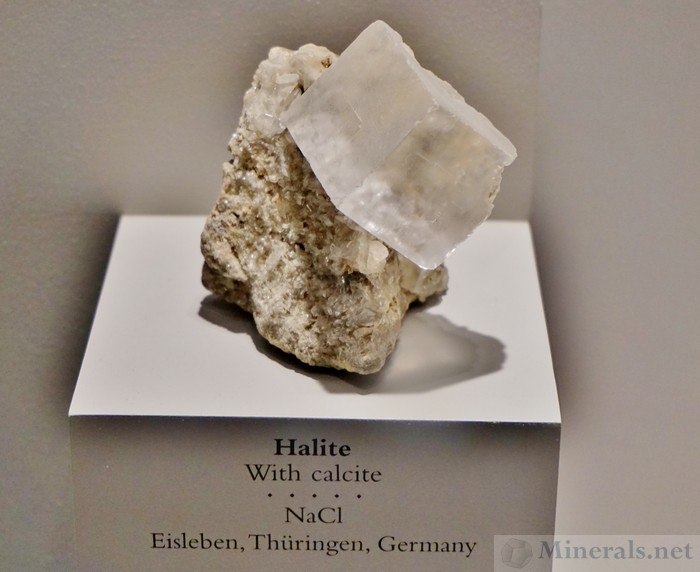
Cubic
Halite with
Calcite from Eisleben, Thuringen, Germany
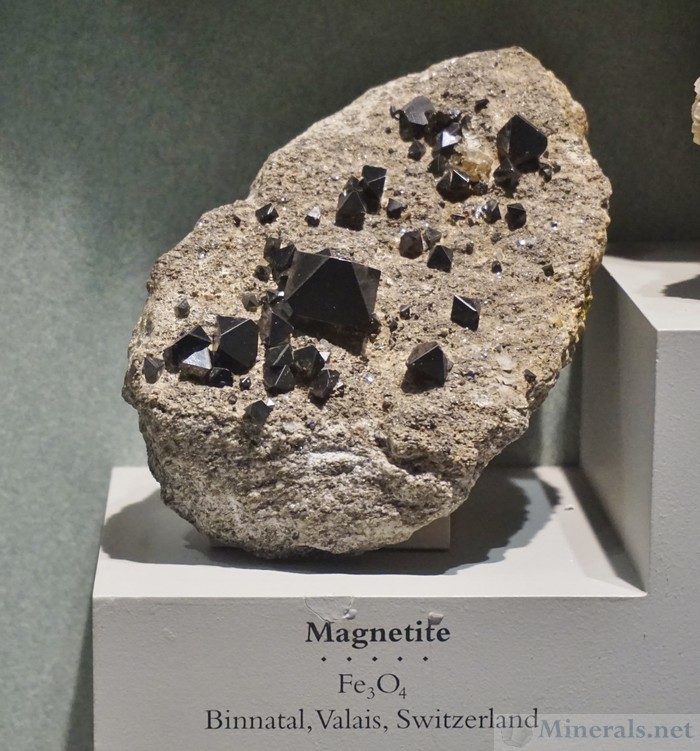 Magnetite Octahedron
Magnetite Octahedrons in Matrix from Binnantal, Valais, Switzerland
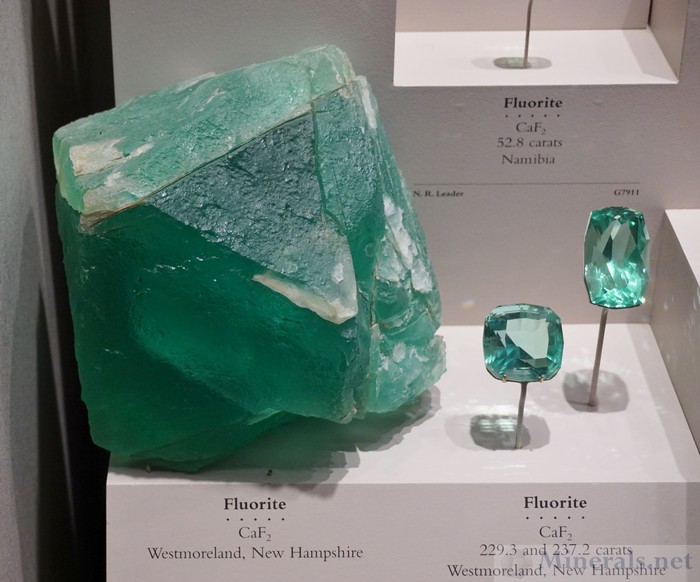
Green
Fluorite Crystal and Cut Gems from Westmoreland, New Hampshire
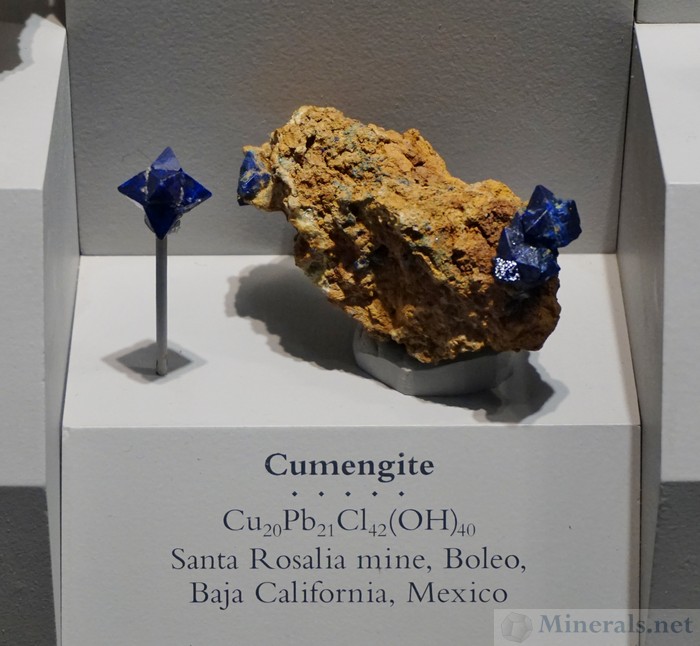
Cumengite Crystal from the Santa Rosalia Mine, Boleo, Mexico
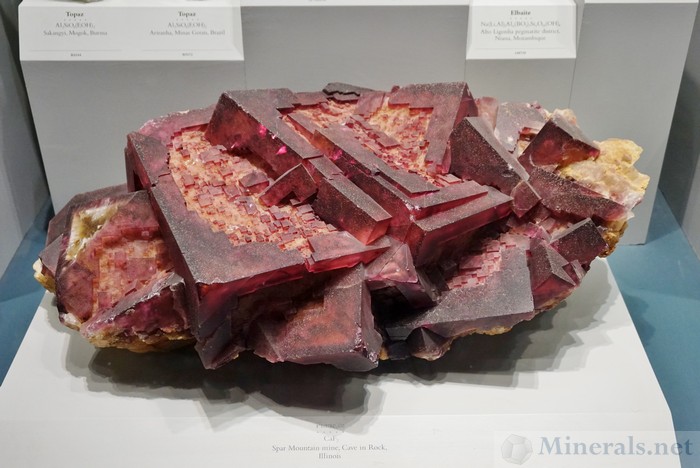
Etched Purple
Fluorite Cubes from the Spar Mountain Mine, Cave in Rock, Illinois
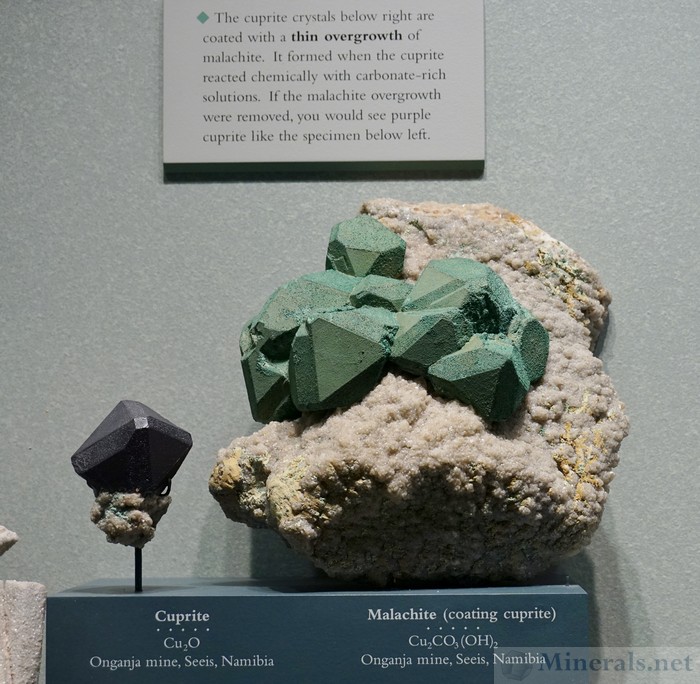 Cuprite
Cuprite with
Malachite Coating from the Onganja Mine, Seeis, Namibia
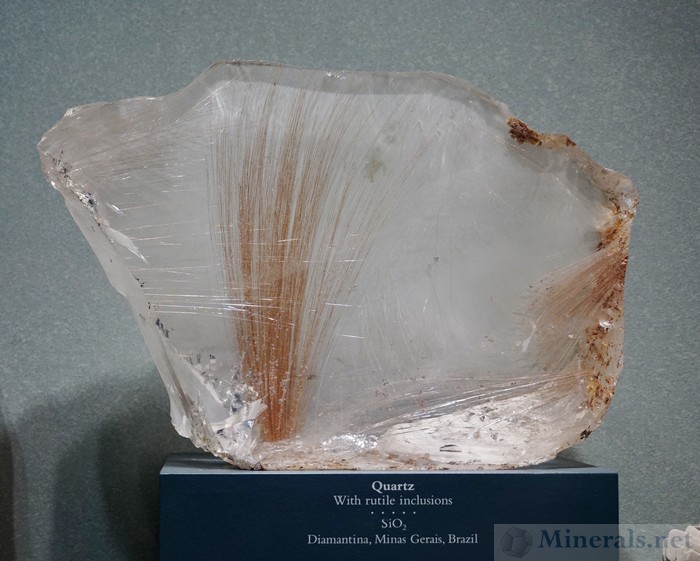 Quartz
Quartz with
Rutile Inclusions from Diamantina, Minas Gerais, Brazil
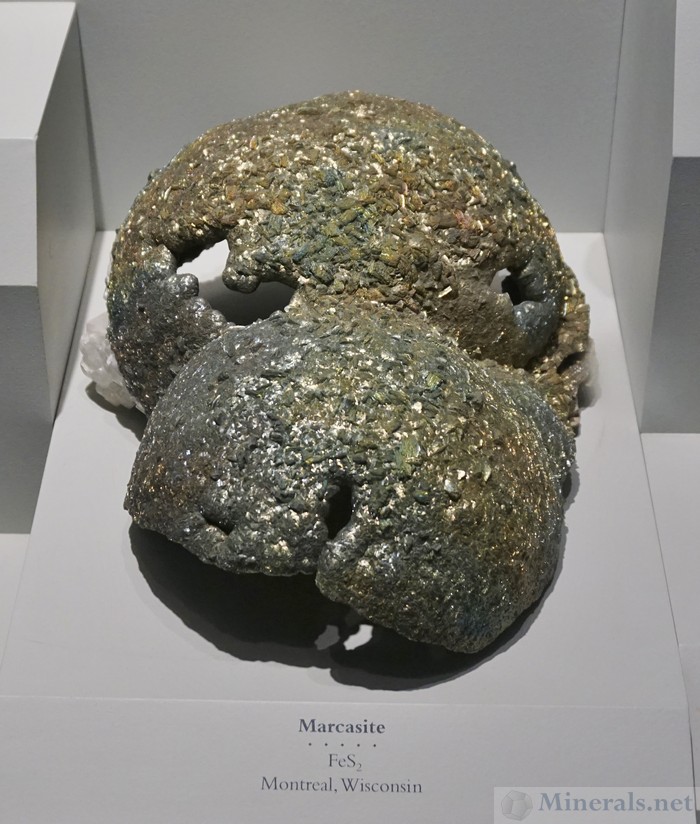
Skull-Shaped
Marcasite from Montreal, Wisconsin
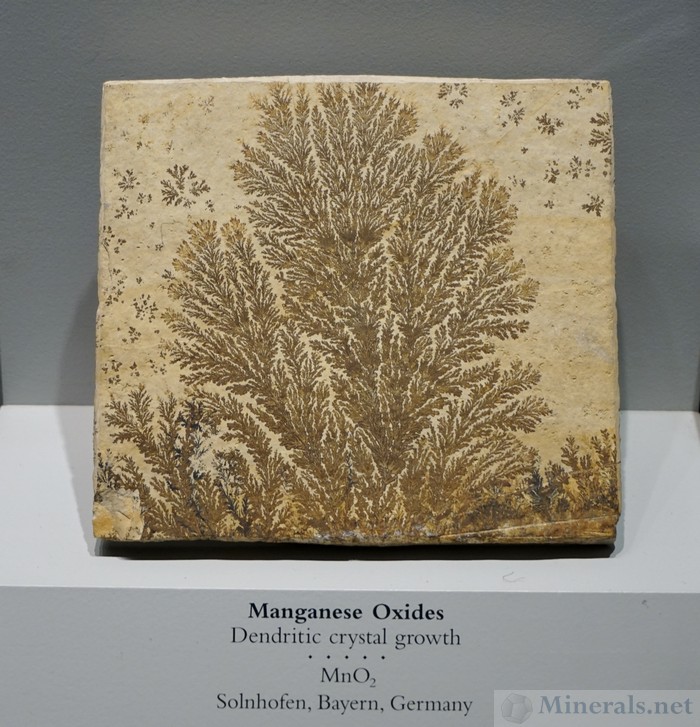
Manganese Oxide
Dendritic Crystal Growths in Matrix from Solnhofen, Bayern, Germany
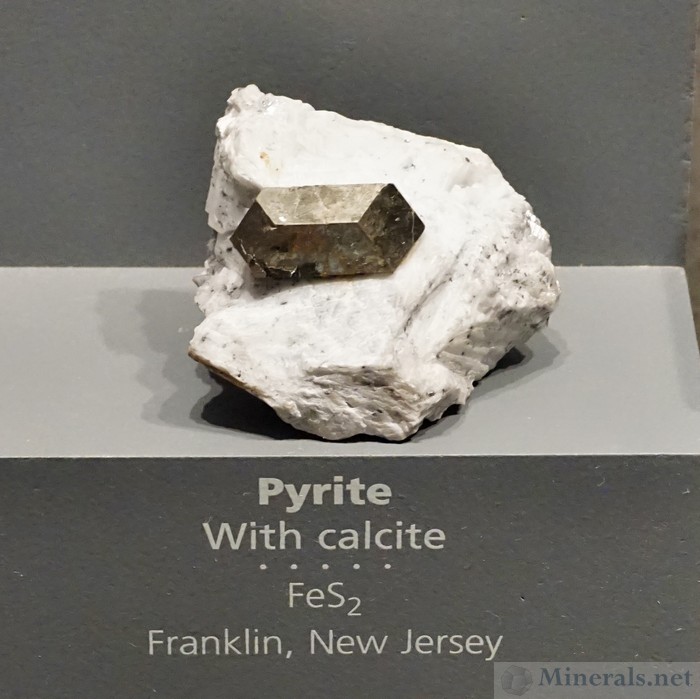
Complex
Pyrite Crystal in Calcite from Franklin, New Jersey
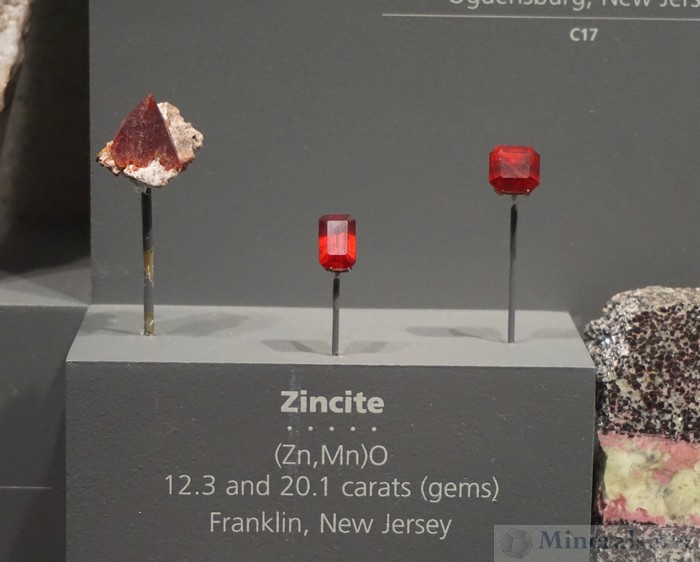 Zincite
Zincite Crystals and Cut Gems from Franklin, New Jersey
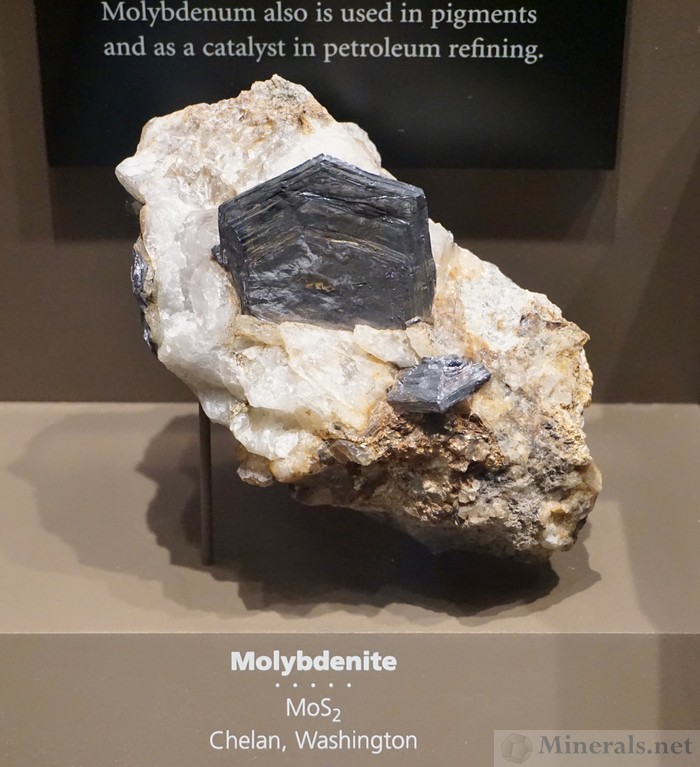 Molybdenite
Molybdenite Crystal in Matrix from Chelan, Washington
Click the pictures below for a larger version pop-up.
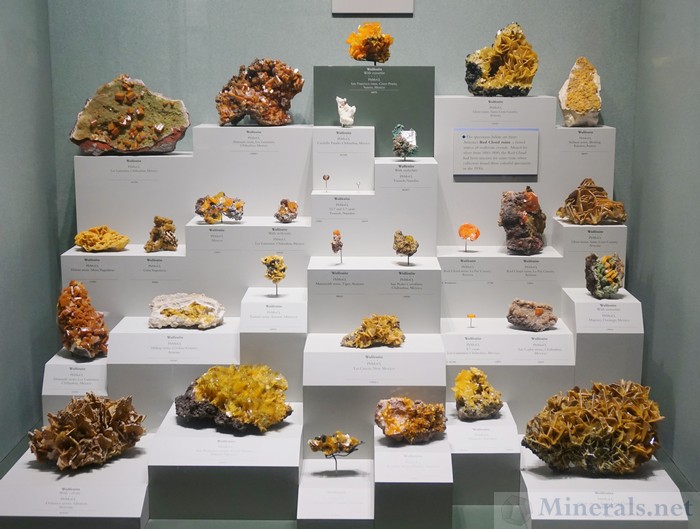 Wulfenite
Wulfenite Exhibit Case
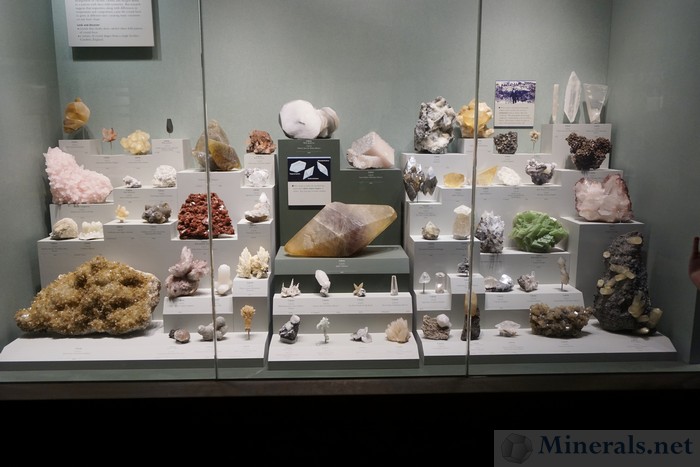 Calcite
Calcite Exhibit Case
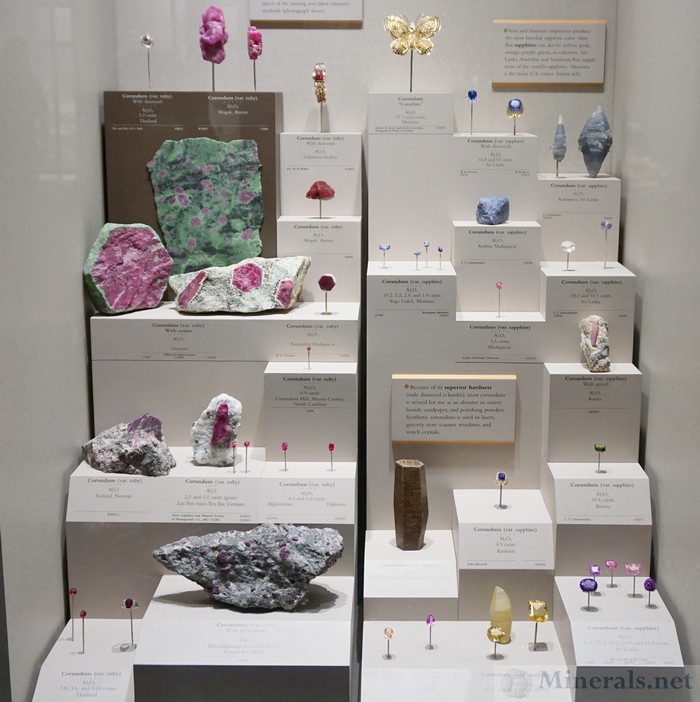 Corundum
Corundum Exhibit Case
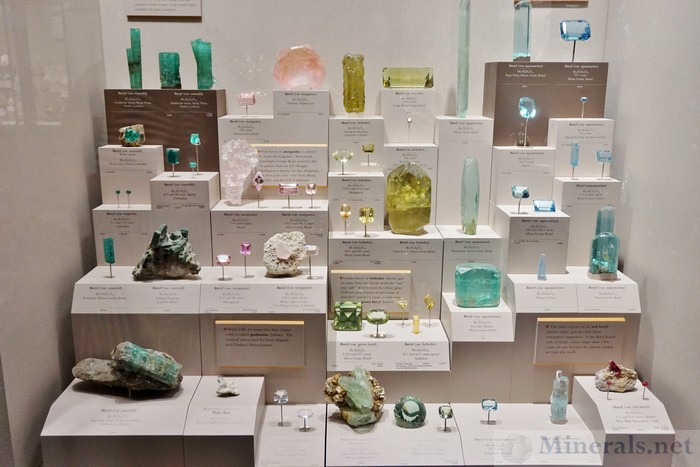 Beryl
Beryl Exhibit Case
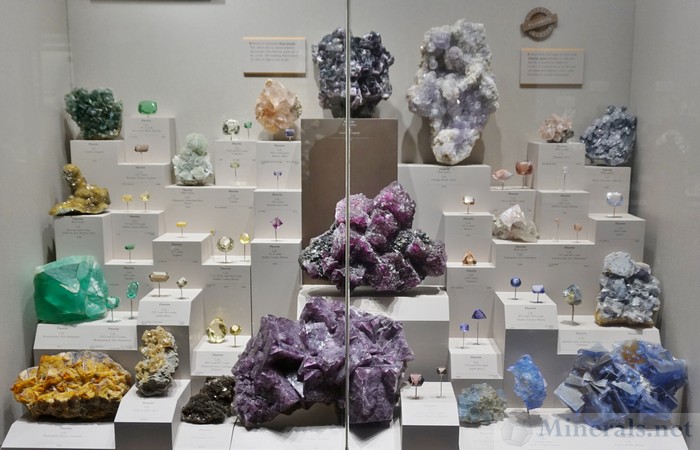 Fluorite
Fluorite Exhibit Case
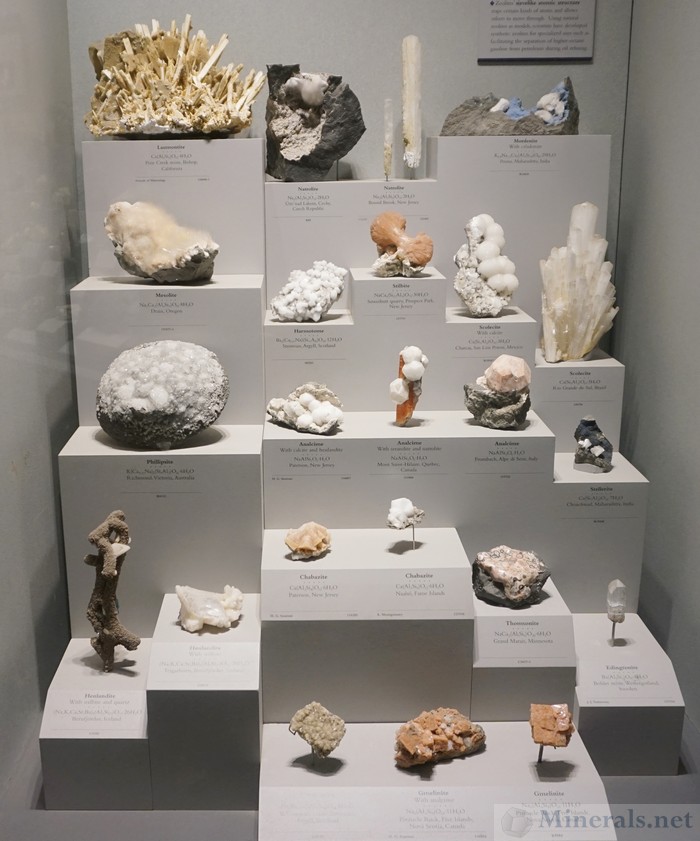 Zeolite
Zeolite Minerals Exhibit Case
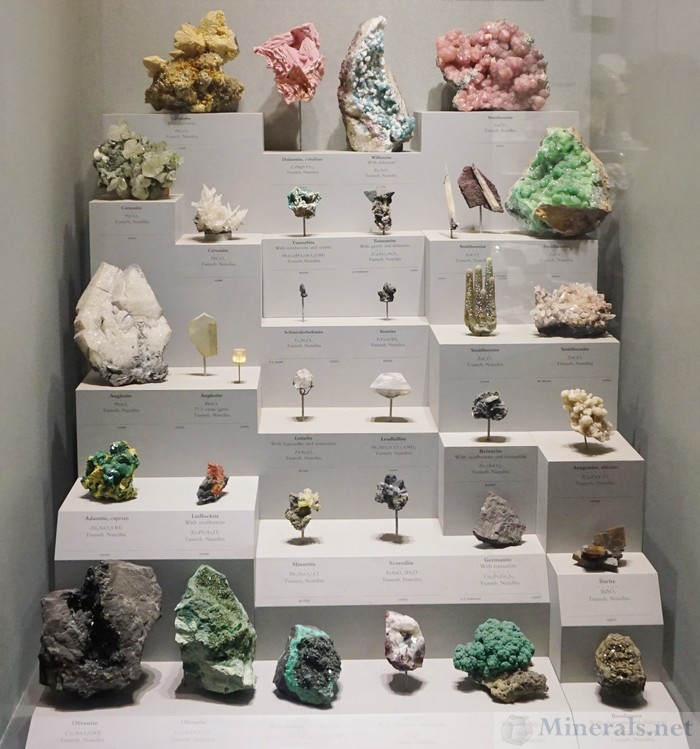
Misc Exhibit Case. I am not sure what the theme for this case is.
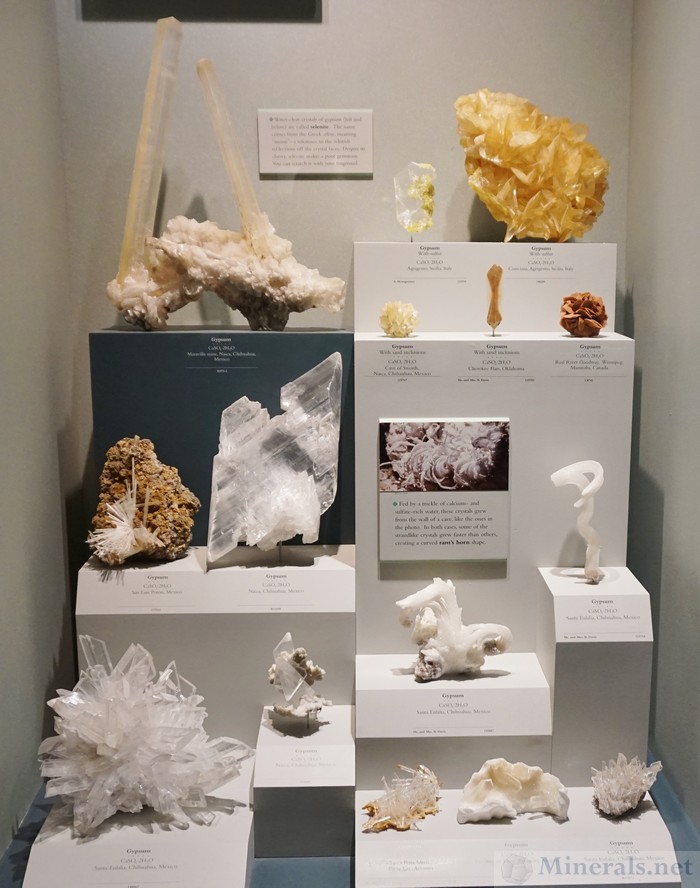 Gypsum
Gypsum Exhibit Case
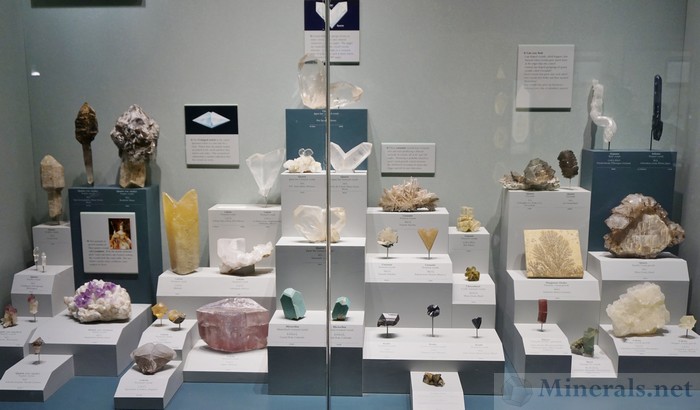
Crystal Twins and Other Interesting Crystal Habits
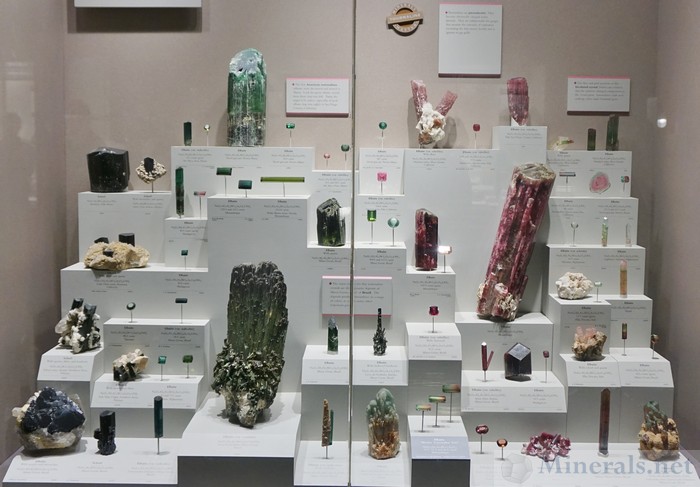 Tourmaline
Tourmaline Exhibit Case
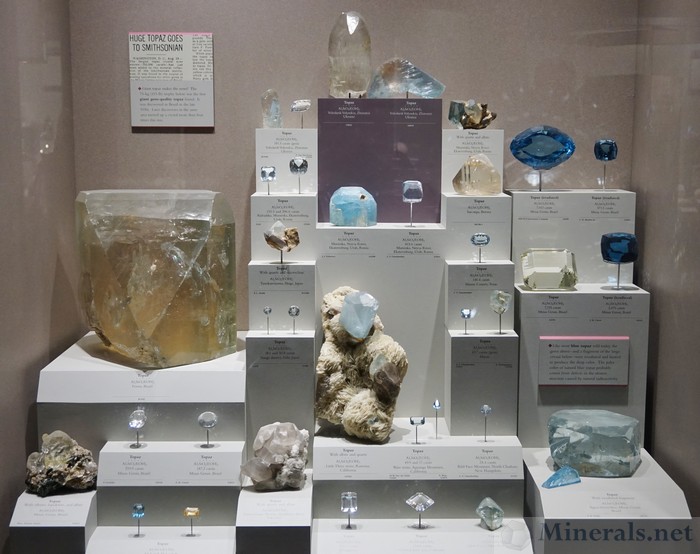 Topaz
Topaz Exhibit Case
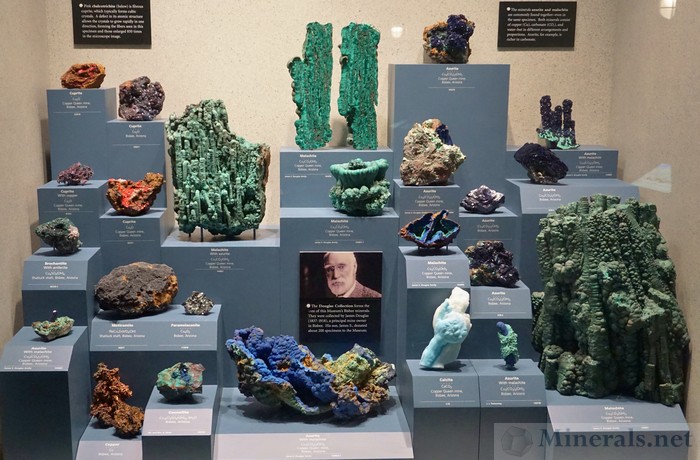
Minerals from Bisbee, Arizona
The Smithsonian gem and mineral collection contains an amazing array of Gold, Silver, and rare metal compounds. Many of the Gold and Silver specimens are among the finest for their localities, and there are also many examples from unusual localities. While not all the minerals show here are composed of precious metals, they are still rare and unusual examples of metallic compounds, especially sulfosalts.
Click the pictures below for a larger version pop-up.
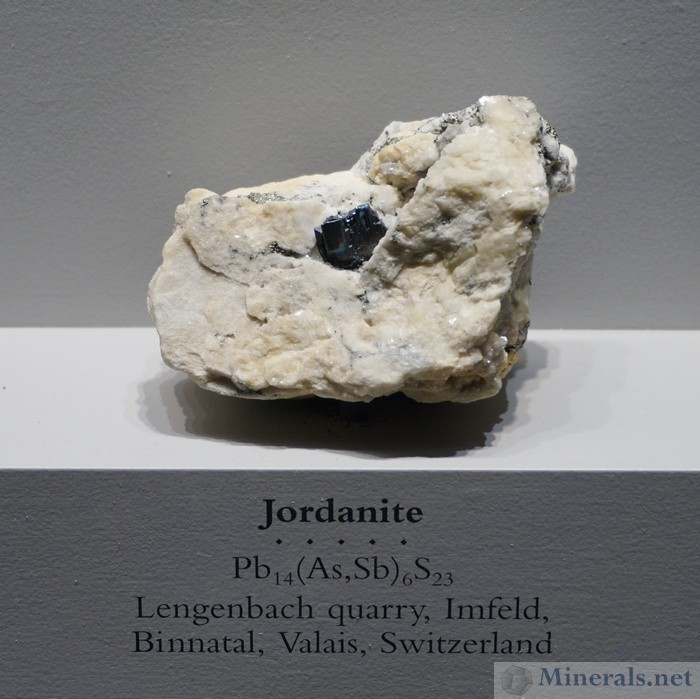
Jordanite, Lengenbach Quarry, Binntal, Switzerland
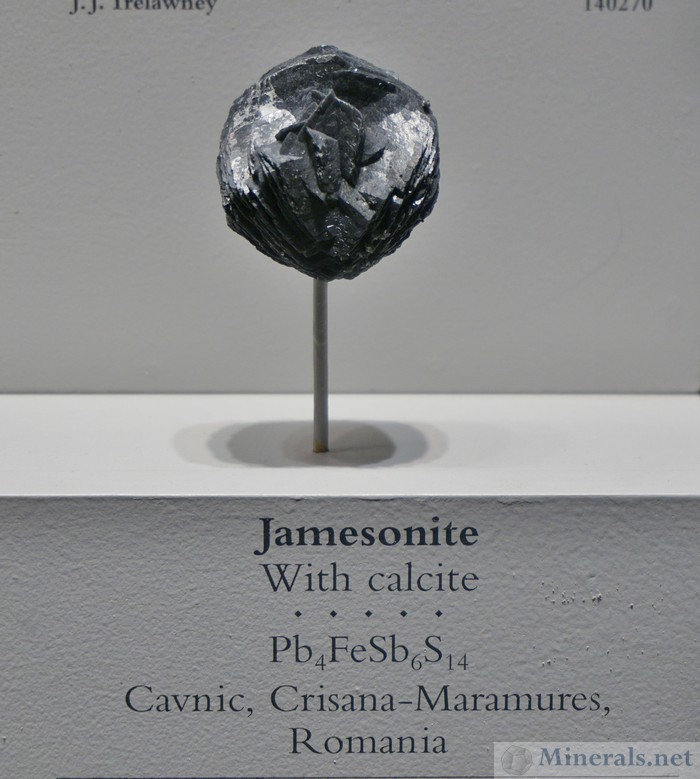 Jamesonite
Jamesonite with
Calcite, Cavnic, Maramures, Romania
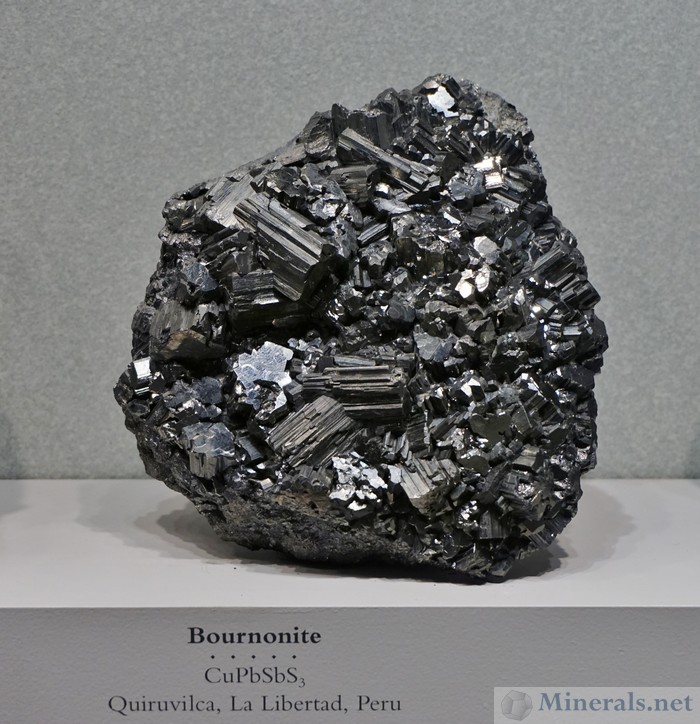 Bournonite
Bournonite, Quiruvilca, Peru
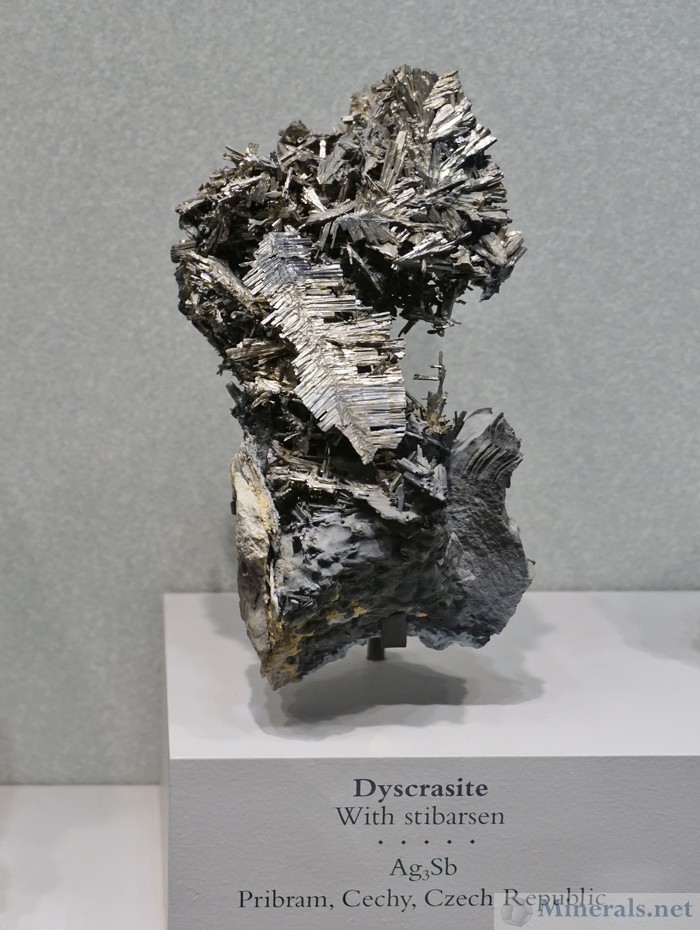
Dyscrasite with
Stibarsen from Pribram, Czech Republic
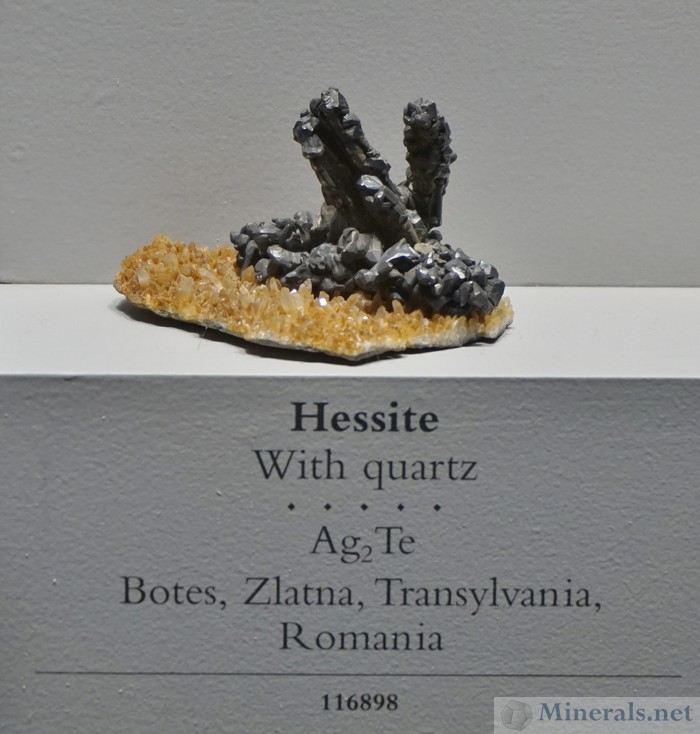
Hessite with Quartz, Botes Transylvania, Romania
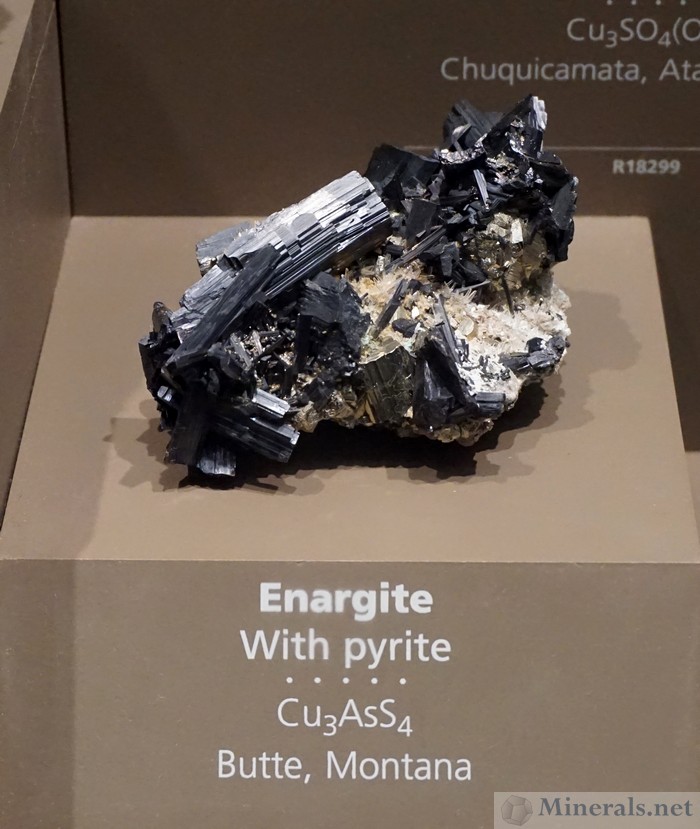 Enargite
Enargite with Pyrite, Butte, Montana
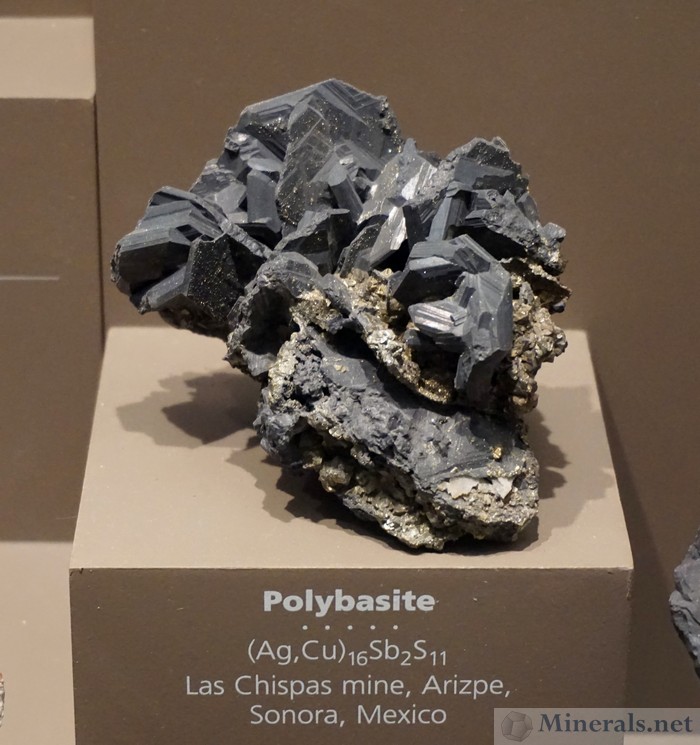 Polybasite
Polybasite from the Las Chispas Mine, Arizpe, Sonoroa, Mexico
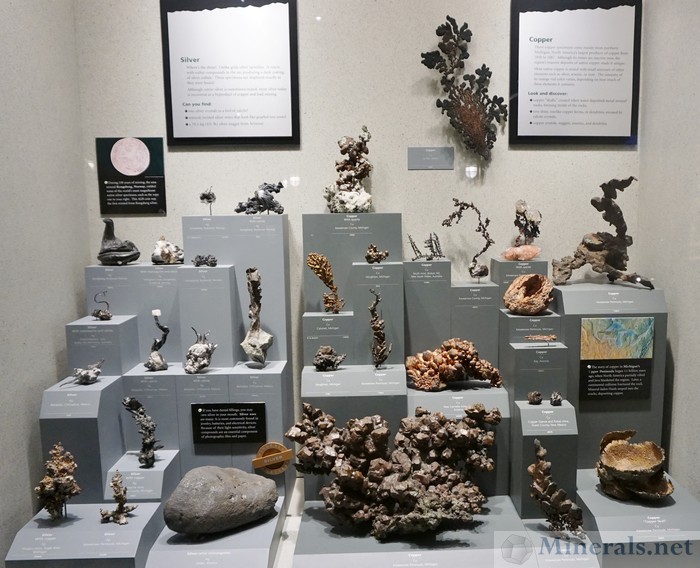
Exhibit Case of
Silver and
Copper
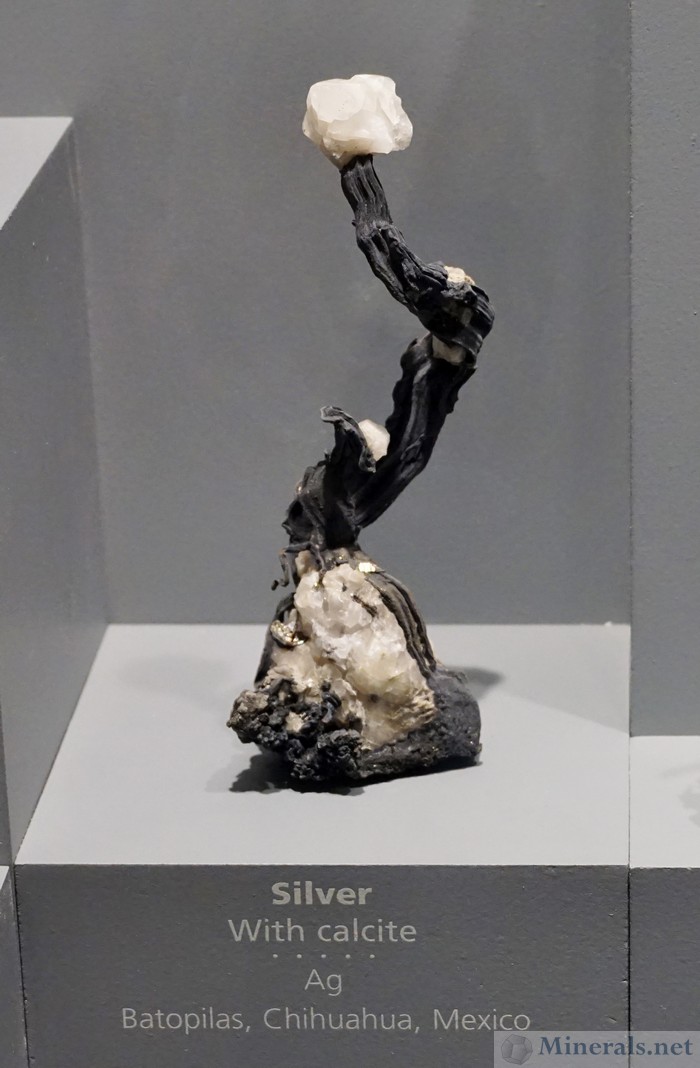
Thick
Silver Wire with
Calcite, Batopilas, Chihuahua, Mexico
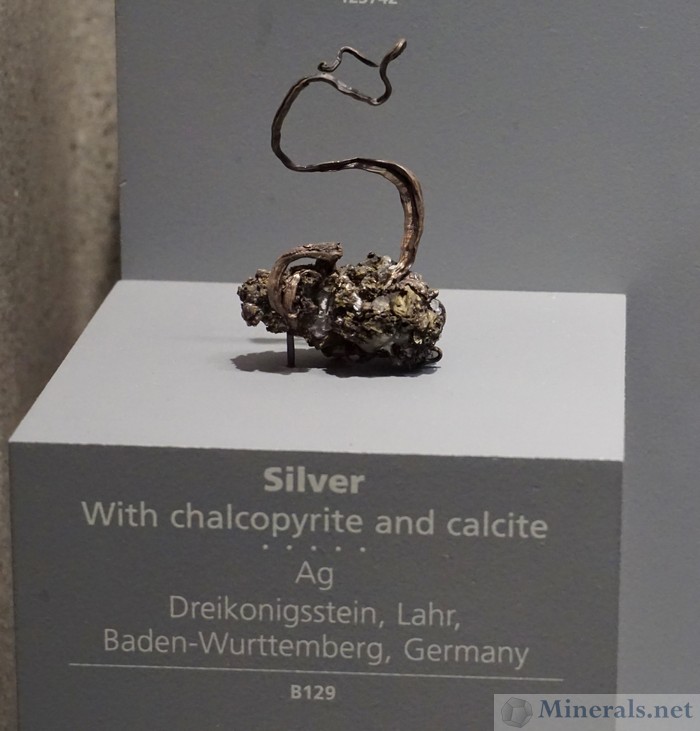 Silver
Silver "S" Wire from Dreikonigsstein, Lahr, Baden-Wurttenberg, Germany
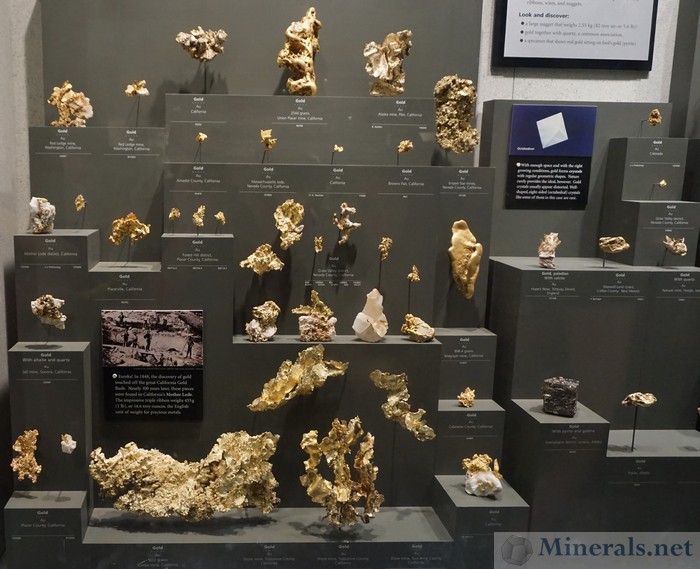
Exhibit Case of
Gold
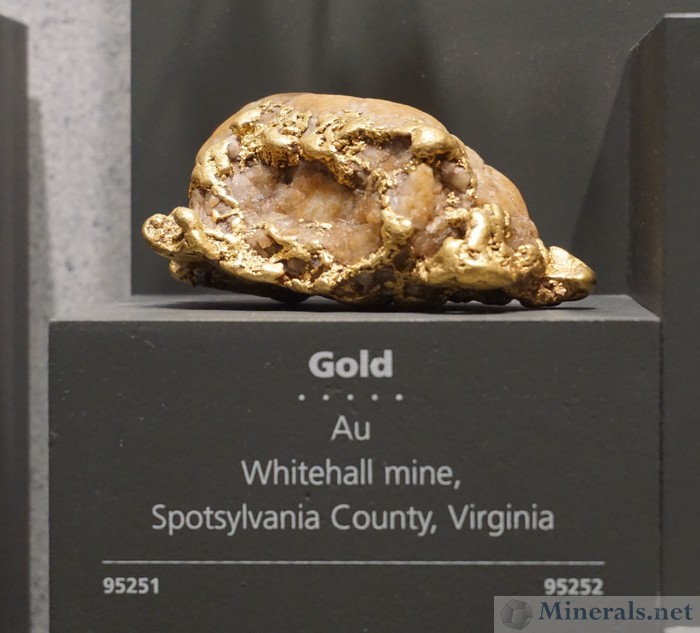 Gold
Gold Nugget, Whitehall Mine, Spotsylvania Co., Virginia
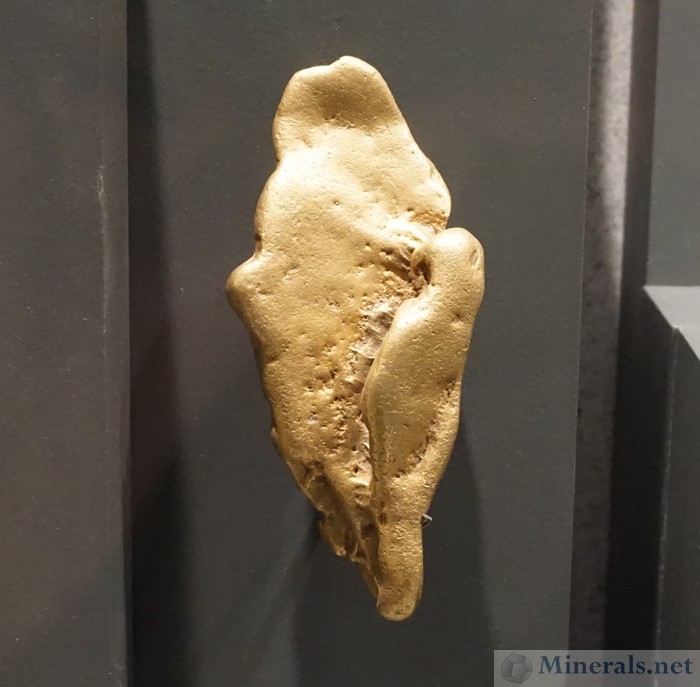
Large
Gold Nugget (898.4 grams), Telegraph Mine, California
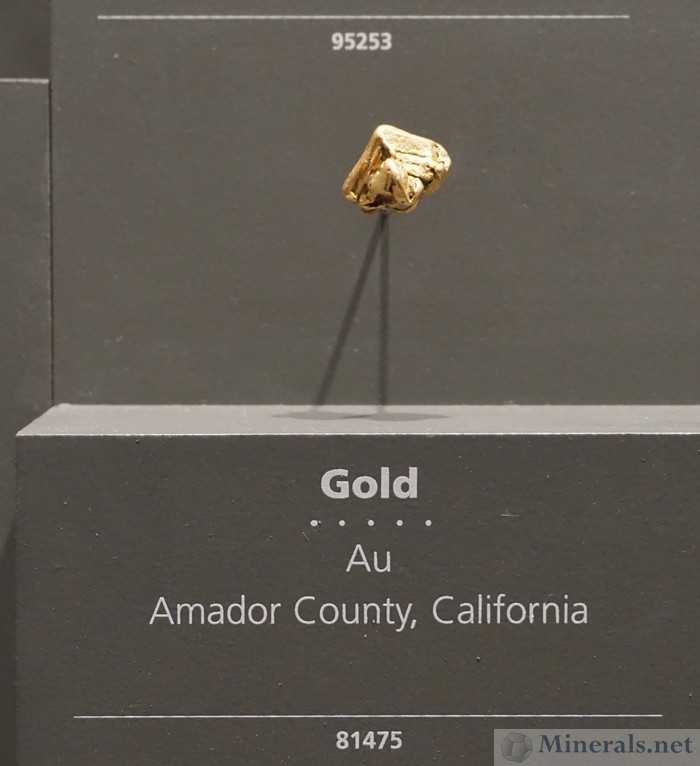
Hoppered
Gold Crystal, Amador Co., California
Click the pictures below for a larger version pop-up.
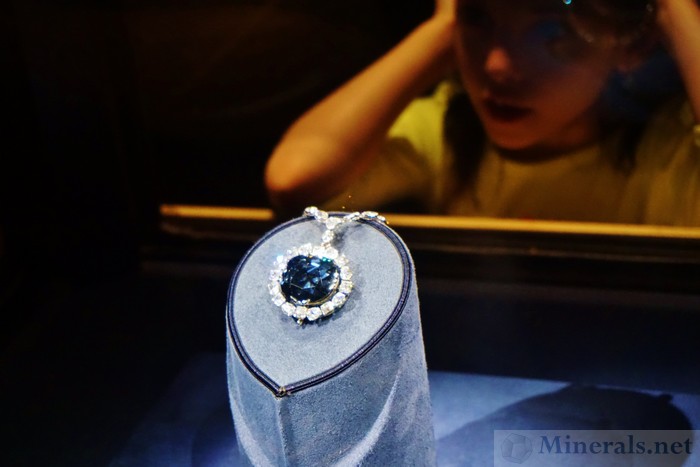
The Famous Blue Hope
Diamond
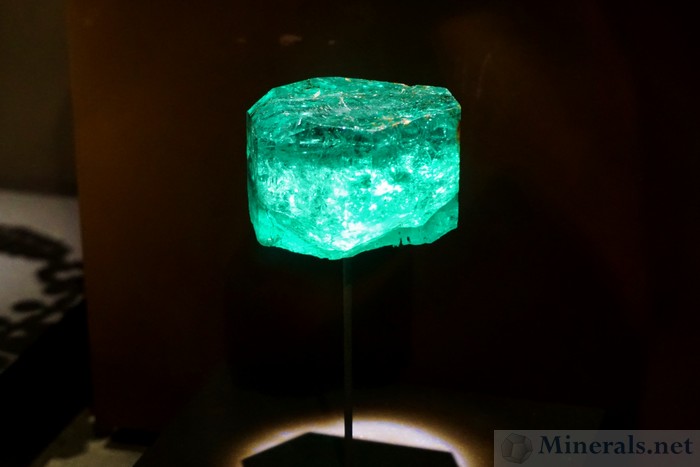
The Gachala
Emerald from Colombia, at 828 ct.
This is one of the largest Emeralds in the World
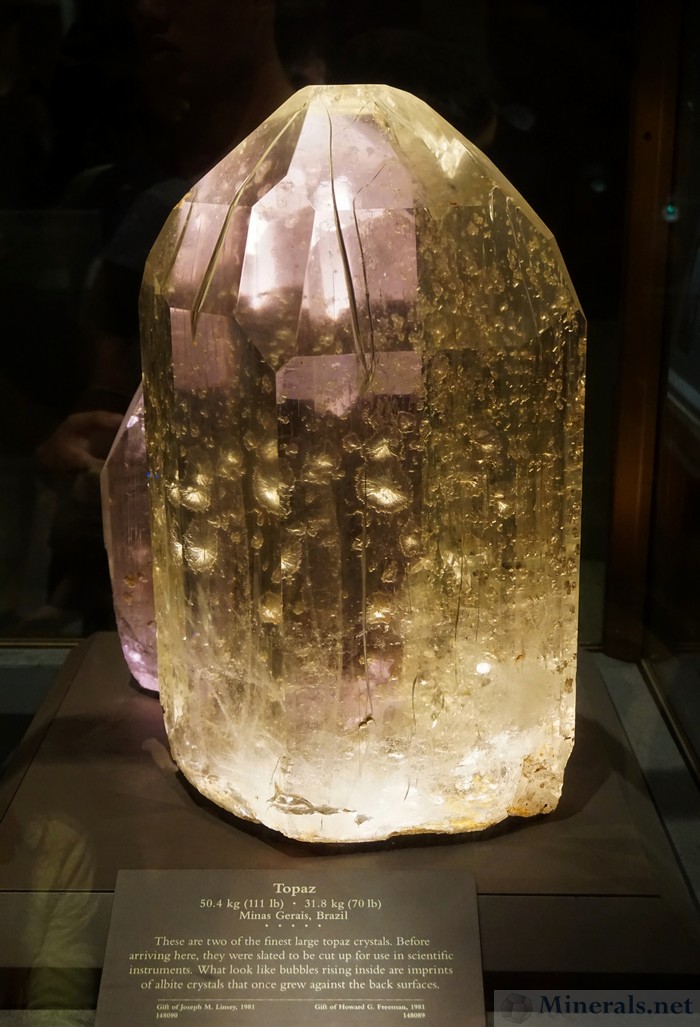
Giant Gem
Topaz Crystal of 111 Lbs
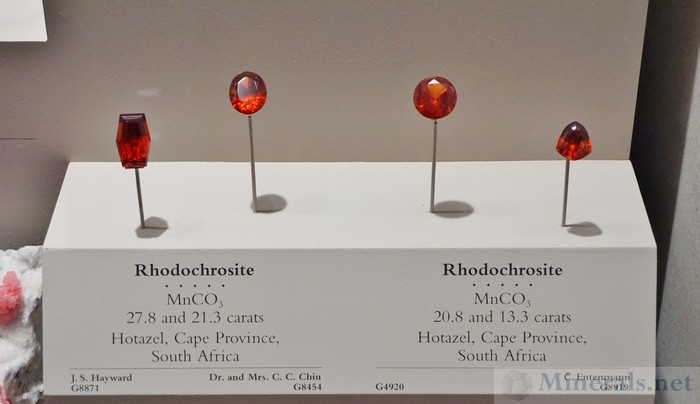
Cut
Rhodochrosite Gemstones from Hotazel, South Africa
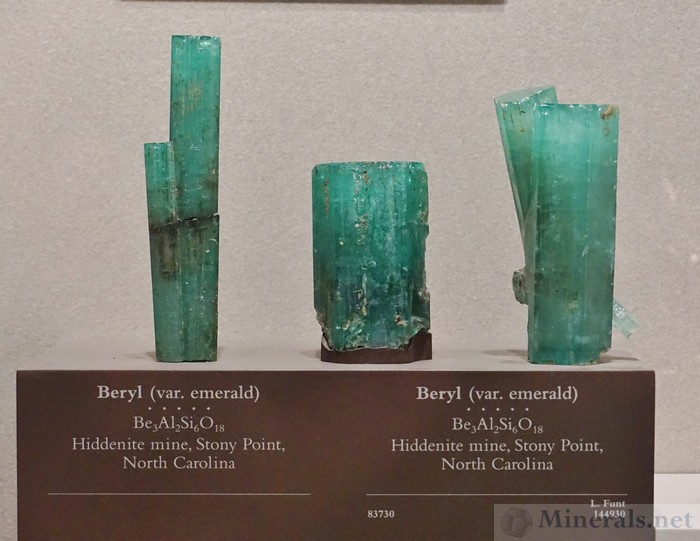
Large
Emerald Crystals from the Hiddenite Mine, Stony Point, North Carolina
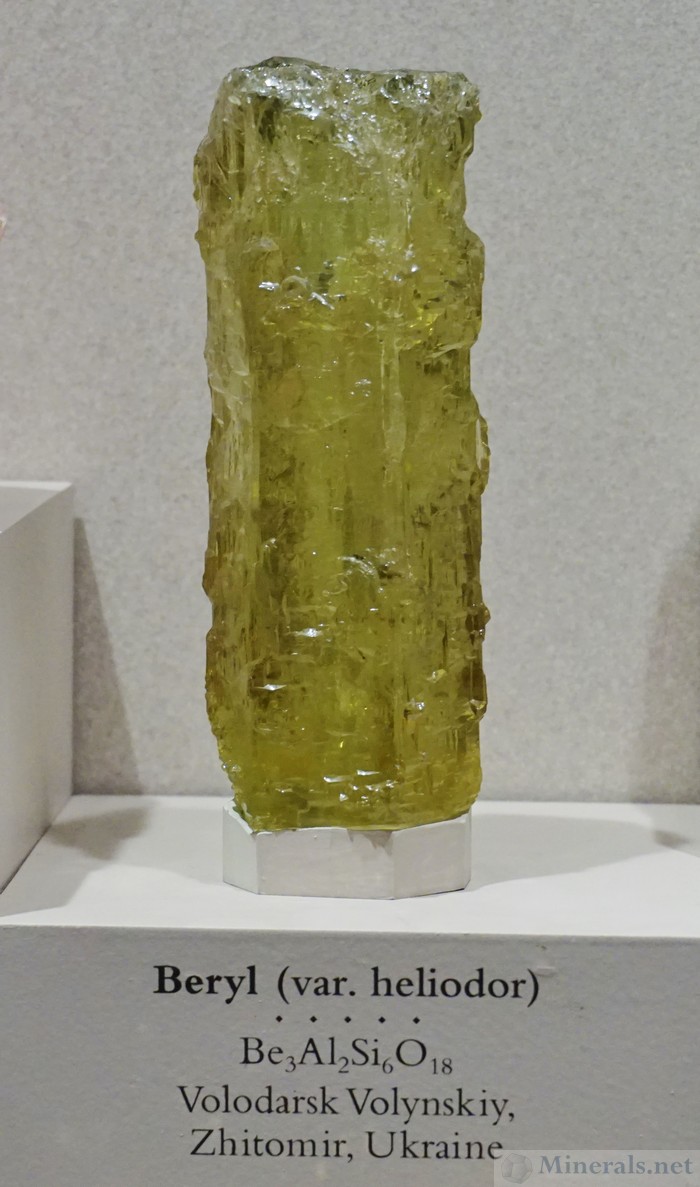
Etched
Heliodor Crystal from Volodark, Zhitomir, Ukraine
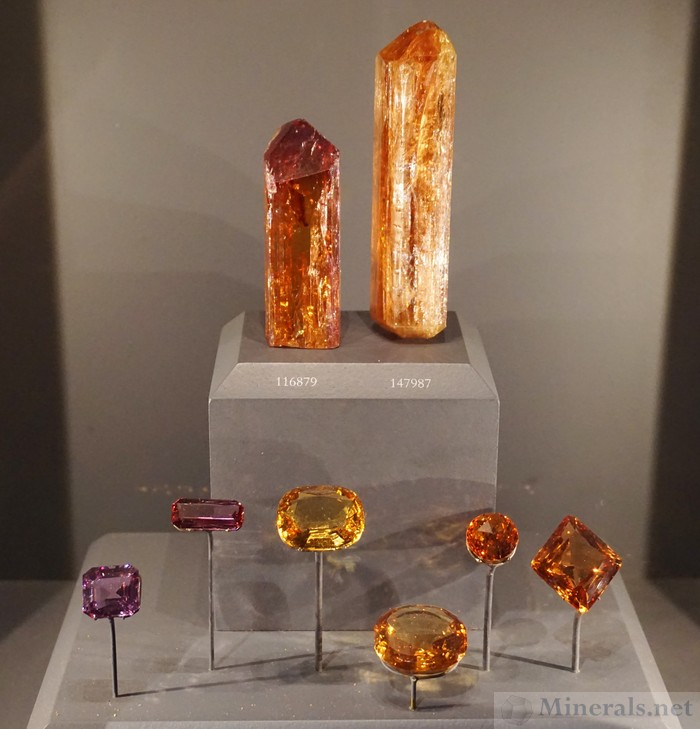
Gem
Topaz from Brazil, Rough and Faceted
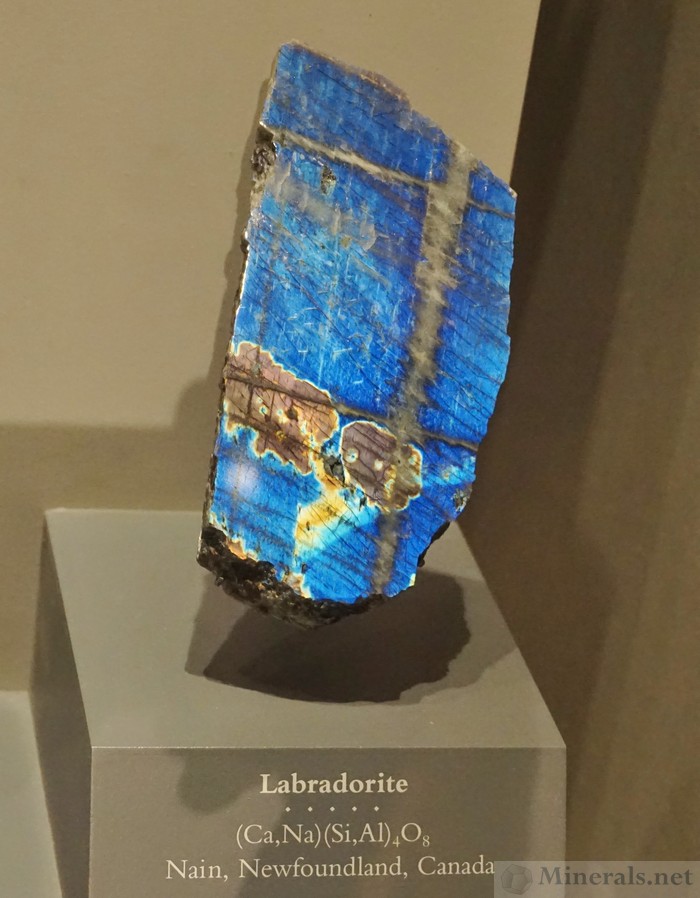 Labradorite
Labradorite Showing Amazing Color Sheen from Nain, Nefoundland, Canada
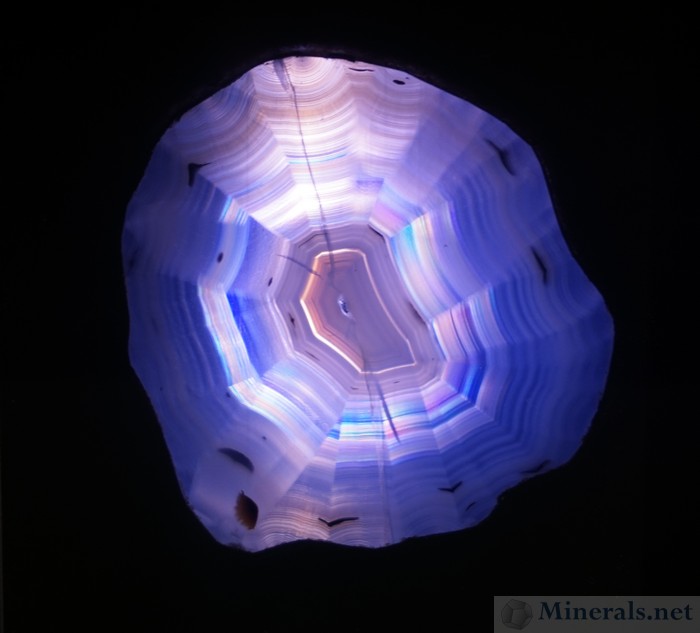
Incredible
Iris Agate from Oregon
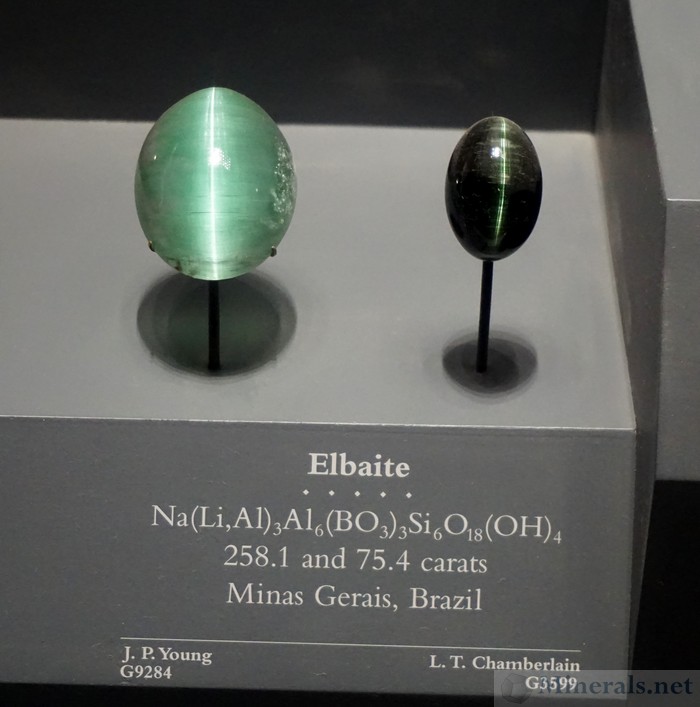
Cat's Eye
Elbaite Tourmaline from Minas Gerais, Brazil
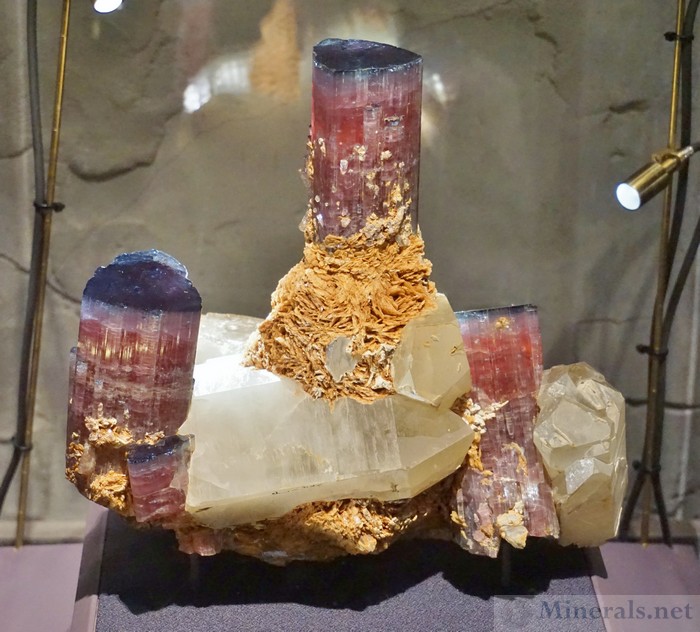 Elbaite Tourmaline
Elbaite Tourmaline "Candelabra" with
Albite and
Quartz
From the Tourmaline Queen Mine, San Diego Co., California
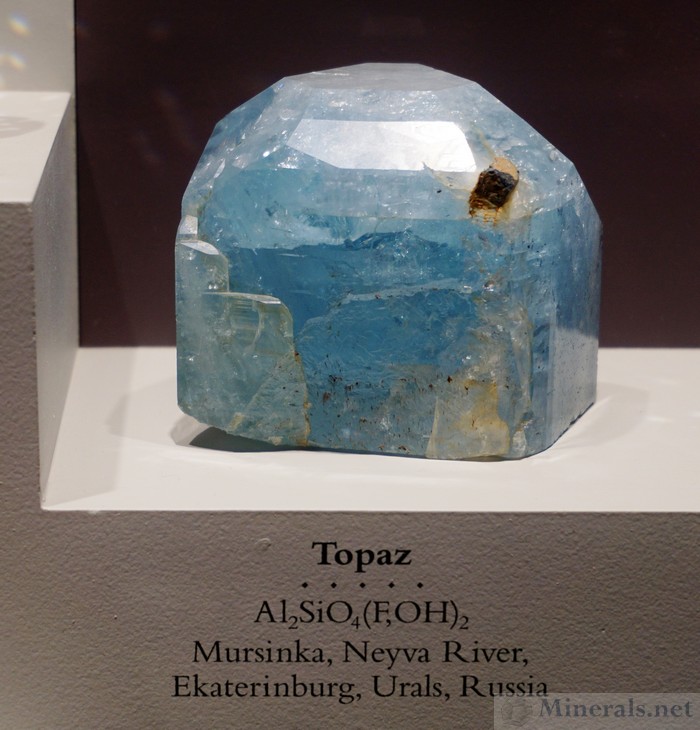
Large Blue
Topaz Crystal from Mursinka, Ekaterinburg, Urals, Russia
This past summer, I made a trip to Washington DC and visited the Smithsonian National Museum of Natural History. This museum features one of the most impressive gem and mineral collections in the world, with over 3,500 world-class specimens on exhibit. In addition to the famous gems on display, such as the Hope Diamond and Gachala Emerald, it has some of the best of species for many minerals on display.
The displays are very impressive, with good lighting and well-planned organization. The museum also has all specimens very clearly labeled, which both novices and experts alike appreciate. Owned by the United States government, all of the Smithsonian museums are free of charge. The only problem with this is that in all my experiences visiting the museum, it is always extremely busy with enough people visiting the gem and mineral gallery to make it feel tight and uncomfortable. It took me about five minutes just to get in line to see the Hope Diamond! Despite the almost constant crowds, I was able to get some excellent pictures of both display cases and individual minerals and gems in the collection.
If you are in Washington DC, this is a key museum that should not be missed. However, be aware that it will likely be busy, especially on weekends and during the summer. Although I have been to this museum several times before, and have even written a short article on my visit, I will now present a more detailed post with many more photos. The postings for Smithsonian Museum exhibit will include the following:
Stay tuned and come back for updates.